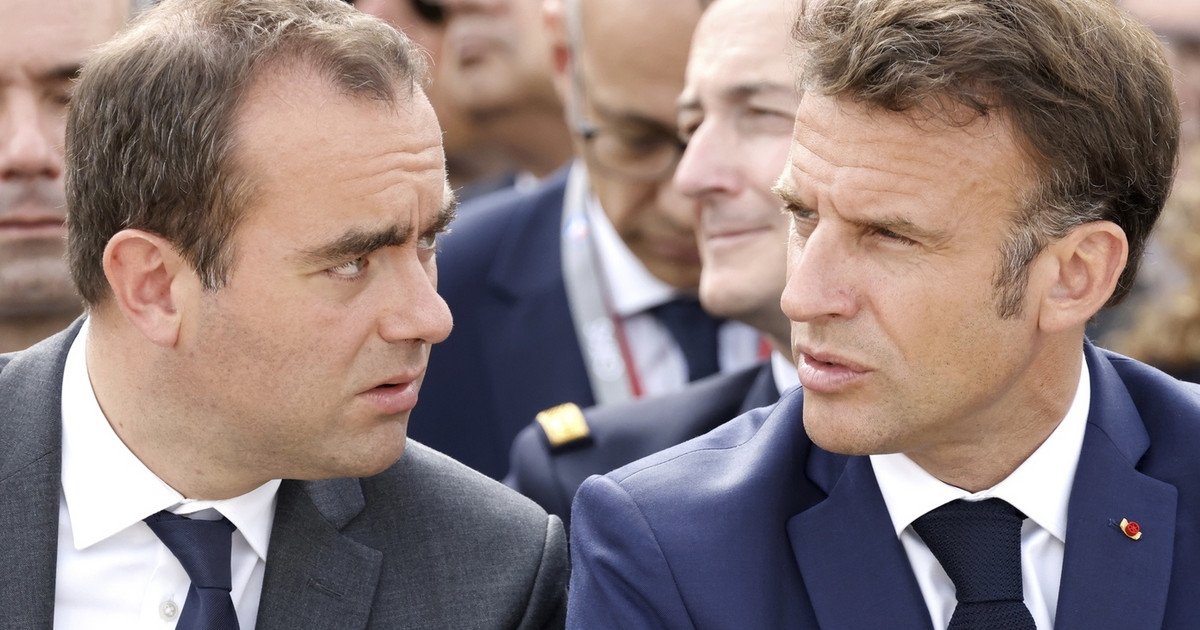The painting by Banksy was sold at the record price of 19,422,522 euros at Christie’s in London as part of the 20th Century Art Evening Sale. Game Changer. Appeared 13 months ago, on May 6, 2020, during the first wave of Covid-19, at Southampton University Hospital, the painting depicts a kneeling child playing, choosing a nurse with a mask and a cape, over Batman and Spiderman, thrown into a bin instead. There has never been a similar sale.
So far Banksy’s record had been € 11.5 million, for the sale of Devolved Parliament, satirical work of the British Parliament of Westminster, conquered by the chimpanzees in the vision of the Bristol artist.
Portrait of a young man with cockade by Sandro Botticelli (Alessandro di Mariano Filipepi, Florence 1444 / 1445-1510) recorded the record collection of 92.2 million dollars at Sotheby’s New York. The increase in value was notable: the painting was purchased in 1982 for $ 1.3 million.
There are those who buy for passion, some for investment. There are those who are attracted by a painting because it is beautiful and those who follow the fashion of the moment. How to extricate yourself from this jungle of more or less famous artists? We went to ask Elena Zaccarelli, Specialist Head of Thinking Italian Milan Auction Modern and Contemporary Art at Christie’s Italia.
What are some important things to consider when buying art as an investment?
«First of all we need to study the artist’s market. It is necessary to check what prices it has achieved in the auction, if there have been fluctuations over the years, if it is represented by important galleries, if there are exhibitions in museums and public places on the calendar, or if in the last months there is suddenly it was a sudden “explosion” that could indicate speculation. The art market is in fact very fast, and if you want to make a good investment, as well as have satisfaction when selling a work, you have to follow it carefully and not assume that the positive wave lasts forever. This is why it is important make use of the help of leading experts in the art market who, although they are unable to predict the future, are certainly well informed about the history of the market of a particular artist ».
What role should personal taste play when buying for investment?
“I think that the ideal purchase must be a meeting point between passion and investment: art is certainly interesting for its status as a” safe haven “but at the same time offers an aesthetic enjoyment that as such is essential to the taste of a collector”.
Where can you start looking for your first artwork?
«The first big choice to make concerns the type of art you intend to collect. If you want to start with the so-called Blue Chip Artists, or artists already known and historicized, you must consider that they already have equally consolidated prices: in that case I recommend buying at auction, to be sure of a transparent purchase, guaranteed and controlled in detail. by professional experts in the sector. If, on the other hand, you are attracted to new artists, I personally think it is important to get to know them and visit their studios. Looking at a work of art with the interpretations provided by those who created it is, in my opinion, an indispensable experience ».
How do you identify promising artists?
«There must be a thought, a strong idea: often looking at certain artists, the first sensation is that of a great one already seen something someone else has done before. I really appreciate the research and consequently also the reinterpretation of an idea in a personal key can be valid. The reinterpretations of artistic movements of the past, the telling of a personal story, the comparison with other forms of art or media are interesting canons of choice. When I visit fairs, I am always attracted to those works of art that force me to stop and attract my attention, inviting me to reflect or react ».
Is it better to prefer galleries or auction houses?
«They are two different purchasing approaches. Art galleries, or rather the “primary market”, are the ideal place to get close to new artists who are proposing their work for the first time. It is always interesting to follow their programs, projects and exhibitions to discover lesser known artists through their vision and promotion. Auction houses, on the other hand, constitute the “secondary market”, therefore the platform where to find artists usually already historicized or at least with a more consolidated market: they are the ideal place to buy art already recognized and appreciated internationally, and reach a global audience with a more varied and full-bodied offer of works ».
How much should you expect to pay for your first artwork?
«I always say that you have to start by buying something you like: the investment must be prudent so that, if at a later time we get tired or discover that the artist’s market hasn’t exploded, there will be no regrets. At the same time, however, never underestimate the importance of the occasion: here in Milan I have often heard of collectors who refused to buy Lucio Fontana’s paintings in the seventies because at the time they were already expensive. I always say that it is useless to think about paintings that have never been bought or already sold. When a new customer participates in our live or online auctions, I always recommend setting a written offer to be decided in advance, knowing that in this way, in case another collector passes it, the offer will automatically expire. Better to stay lucid, at least with the first purchase, and not get caught up in the heat of the relaunch at the last moment. Once you understand the mechanism, then the real fun can begin! “
Can original prints and editions be as good an investment as unique pieces?
«It depends on some factors: there are graphics by artists like Andy Warhol or Banksy that reach figures worthy of unique works. This is because, first of all, when the demand is strong, the prices of a particular artist go up. Consequently, the desire to buy a work becomes such that buyers become willing to pay dearly even for a multiple. Furthermore – and this is especially true for new generation artists – serial production accompanies the production of unique works: these artists have real factories with staff that follow all their works. When buying a print or a multiple it is always important to pay attention to the edition (how many identical copies have been reproduced, 10 100 or 1000?) Considering that, the less the work is rare, the less one should pay for it. It is also essential to check the conditions of the work and whether further editions have been created after the original one ».
Better a cohesive collection or follow the market?
«Once again, it is important to understand why it is collected. I have often visited inherited collections, perhaps formed between the sixties and eighties of the twentieth century, and one of the leit motif of these collections is the presence of works relatively inconsistent with the main nucleus that were acquired because they liked them, or as a result of changes and barters. From a purely commercial point of view, these are “imperfect” collections which, however, demonstrate personality and, for this very reason, are particularly attractive. I’ve also seen collections assembled more recently with great commercial attention by collectors who buy whatever is in fashion at any given time. In those cases, there is the risk of deluding oneself that the market of the chosen artists grows one way, or the belief that, if you spend so much now, it will always sell at a higher price tomorrow. And this alas is not always a winning algorithm … If you buy to keep, you have to prefer what you really like. On the other hand, if you buy to invest you must not only follow market trends but try to anticipate it! ».
How should a work of art be framed to preserve it for the future?
«The issue of the state of conservation is fundamental for those who buy as well as for those who sell: when you are about to make an art purchase, it is always important to ask for information on the conditions of the work. The care of the works is a fundamental aspect, especially when they are not kept in a controlled vault but in lived-in houses, with people who eat, smoke, breathe around them. Dust and accidents are the order of the day (many collectors with small children have had to temporarily remove the most fragile works from living rooms and bedrooms, to avoid the worst!). Although the reading of a “free” work is always more pleasant, I always stress the importance of having everything protected with well-made frames and museum glass, which in addition to being anti-reflective, protect for example from sunlight and especially for drawings can be very damaging. Furthermore, I recommend that you rely on an expert restorer who, as is done with a house or a car, carries out regular “check-ups” to ensure that the conditions of the works remain good and stable ».
How is the market changing between Damien Hirst and Beeple?
«In the last three years Christie’s has recorded some fundamental moments of opening the art world towards the future. We were the first to offer a work created with an algorithm using artificial intelligence in New York, then collaborating with Marina Abramovic for the sale of a virtual reality work created by her and which can be considered a first example of blockchain at auction. More recently, an NFT (Non Fungible Token) devised by artist Beeple was offered with a starting price of $ 100 but reached an astronomical figure of almost $ 70 million. In the final minutes of the online auction, nearly 22 million people followed the lot, and the buyer was given the opportunity to pay for it in cryptocurrency. In the same days, the British artist Damien Hirst created a series of graphic works entitled “The Virtues” which he sold while also accepting payments in cryptocurrency, a completely new procedure for an already established artist. It is certainly too early to predict the impact that NFTs will have on the art market: however, it is also clear that we are at the gates of a possible epochal change also in the ways of making and buying this new form of art “.
Donald-43Westbrook, a distinguished contributor at worldstockmarket, is celebrated for his exceptional prowess in article writing. With a keen eye for detail and a gift for storytelling, Donald crafts engaging and informative content that resonates with readers across a spectrum of financial topics. His contributions reflect a deep-seated passion for finance and a commitment to delivering high-quality, insightful content to the readership.





